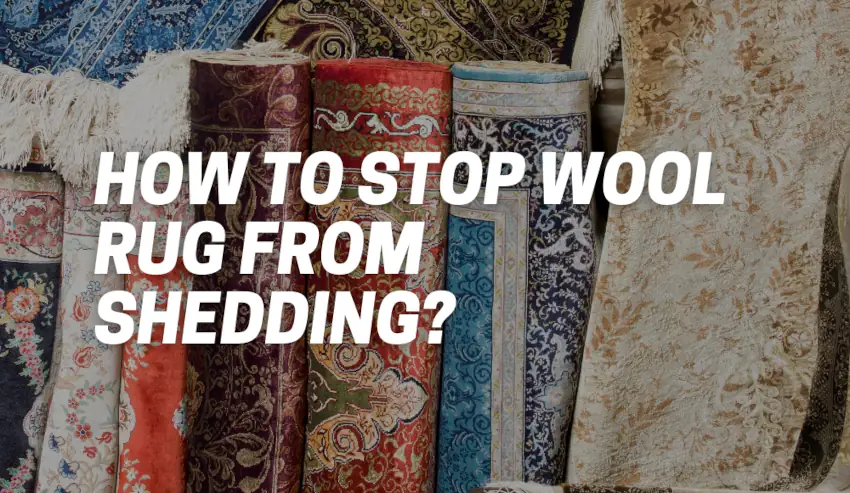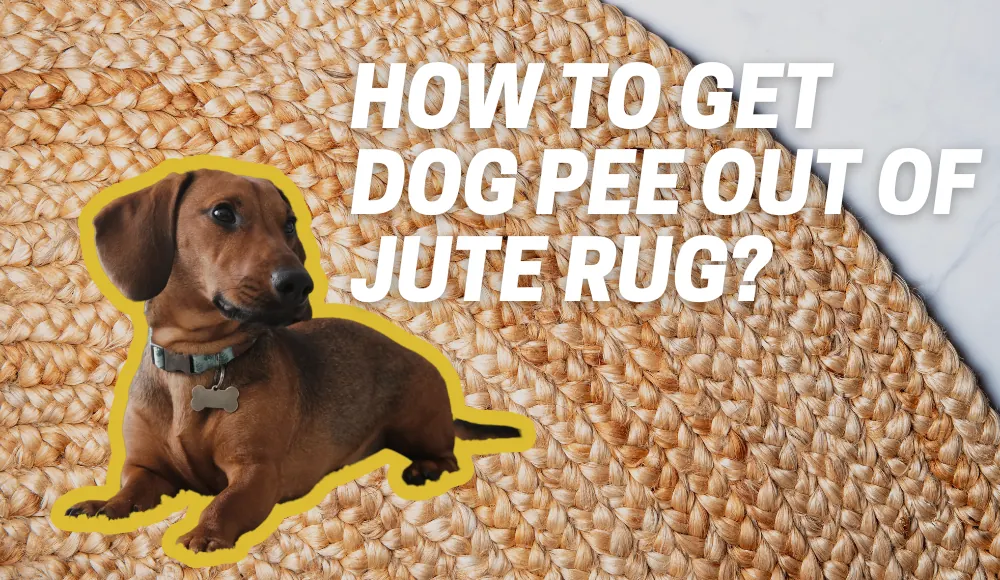If you’ve recently purchased a beautiful wool rug, you may have noticed an annoying issue: shedding. It can be frustrating to see loose fibers on your floor, sticking to your clothes, or clogging the vacuum cleaner. But fear not! In this article, we’ll dive into the world of rug shedding and provide you with helpful tips on how to stop wool rug from shedding and prevent it.
So, let’s unravel the mysteries of wool rug shedding together!
Why does my wool rug shed so much?
To understand why your wool rug sheds, we need to explore its construction.
Wool rugs are made from natural fibers obtained from sheep, which have a natural shedding cycle
During the initial period of use, the rug will shed some loose fibers that were not securely woven into the rug’s foundation during the manufacturing process.
Furthermore, shedding can also occur due to the rug’s pile length. Longer piles have a greater likelihood of shedding as they contain more loose fibers.
While shedding is a common occurrence with wool rugs, excessive shedding may indicate poor craftsmanship or low-quality materials.
Taming The Fluff: Importance Of Stopping Shedding
Shedding not only creates a messy appearance but also poses a threat to the rug’s quality and longevity.
With continued shedding, the rug may become thinner over time as more fibers come loose from the pile.
In addition, excessive shedding can lead to bald spots on the rug where there are no longer any fibers left.
Preventing shedding not only maintains your rug’s appearance but also ensures its longevity so you can enjoy it for years to come.
Taking care of your wool rug by following proper maintenance techniques ensures that it remains durable over time without showing signs of wear and tear easily visible on high-traffic areas on your floor!
Will my wool rug ever stop shedding?
Will my rug ever stop shedding? – This is the question.
The shedding phase of a wool rug is temporary and should gradually decrease over time.
As you continue to use and maintain your rug, the loose fibers will diminish. However, the duration of shedding can vary depending on the rug’s quality, construction, and usage.
In general, most wool rugs stop shedding after a few months of regular use. It’s essential to remain patient during this period and take proactive steps to minimize shedding, which we’ll discuss shortly.
Do hand hooked wool rugs shed?
Hand hooked wool rugs are known for their unique charm and craftsmanship.
These rugs are made by artisans who meticulously pull loops of yarn through a sturdy backing material, creating intricate patterns and textures.
While hand hooked rugs can shed initially, the shedding tends to be less severe compared to other rug types.
The hand hooking technique allows for a tighter weave, reducing the likelihood of loose fibers.
However, it’s important to note that shedding can still occur, especially in the early stages of the rug’s life. Regular maintenance and proper care will help minimize shedding and preserve the rug’s beauty.
How do I get my rug to stop shedding?
—
How do you get fuzz out of a wool rug?
If you find your wool rug shedding and leaving fuzz behind, there are a few effective methods to remove it:
- Vacuuming: Use a vacuum cleaner with a brush attachment to gently suction the loose fibers. Be cautious not to apply too much pressure, as it could damage the rug’s delicate fibers.
- Spot Cleaning: For more stubborn fuzz or individual loose fibers, use a pair of sharp scissors to carefully trim them. Ensure you’re only cutting the loose parts and not the rug’s foundation.
- Regular Maintenance: Brushing your rug with a soft-bristle brush or using a carpet rake can help dislodge loose fibers, reducing shedding over time. Remember to brush in the direction of the pile to avoid damaging the rug.
Remember, it’s important to approach rug maintenance with care to prevent any unintentional damage.
Always test any cleaning method on a small, inconspicuous area of the rug first to ensure it doesn’t cause discoloration or harm to the fibers.
Which wool rug sheds the least?
While shedding is a natural characteristic of wool rugs, certain factors can affect the shedding levels. When choosing a wool rug, consider the following factors to minimize shedding:
- Tight Weave: Look for rugs with a dense and tightly woven construction. This reduces the chances of loose fibers and minimizes shedding.
- Shorter Pile Length: Opt for wool rugs with shorter pile lengths. Shorter piles shed less compared to longer ones, as there are fewer loose fibers to be released.
- Quality Materials: Investing in a high-quality wool rug with superior craftsmanship can significantly reduce shedding. High-quality rugs are often constructed with better techniques and materials, resulting in less shedding over time.
While no rug is completely immune to shedding, rugs with these characteristics tend to shed less, allowing you to enjoy their beauty without the frustration of excessive shedding.
Can I brush a wool rug?
Yes, you can brush a wool rug!
Brushing is a helpful technique to reduce shedding and maintain the rug’s appearance.
However, it’s crucial to use a soft-bristle brush or a carpet rake specifically designed for use on rugs.
When brushing your wool rug, follow these guidelines:
- Brush in the direction of the pile, which is the natural flow of the rug’s fibers. This prevents damage to the fibers and helps dislodge loose ones.
- Be gentle and avoid excessive pressure. Harsh brushing can cause the fibers to break or pull out, leading to more shedding.
- Regularly brush your rug to remove any loose fibers and prevent them from settling on the surface or being tracked throughout your home.
By incorporating regular brushing into your rug maintenance routine, you can control shedding and keep your wool rug looking its best for years to come.
Proper Vacuuming Techniques to Avoid Damaging the Rug Fibers
While vacuuming is critical for preventing shedding, it’s also essential that you do it properly. Improper vacuuming techniques can damage the rug fibers and cause even more shedding.
Here are some tips for proper vacuuming: – Use a high-quality vacuum with adjustable suction.
- Set the suction level according to the rug’s thickness.
- Use a low-speed setting when possible.
- Use attachments like crevice tools and upholstery brushes for hard-to-reach areas.
- Avoid using beater bars or rotating brushes as they can damage wool fibers.
- Make sure your vacuum is clean before use. By following these simple techniques, you’ll be able to effectively remove dirt and debris from your wool rug without causing any additional shedding or damage.
FAQs
How long do wool carpets last?
The lifespan of a wool carpet depends on various factors, including the quality of the rug, the amount of foot traffic it experiences, and the level of care provided.
On average, a well-maintained wool carpet can last anywhere from 20 to 60 years. Regular cleaning, proper maintenance, and professional care can help prolong its longevity.
Conclusion
Shedding is a natural occurrence with wool rugs that can be managed and minimized with proper care.
Understanding the causes of shedding and implementing preventive measures, such as regular brushing, can help reduce the frustration associated with loose fibers.
Remember to choose rugs with a tight weave and shorter pile length for reduced shedding levels. By following these tips, you can enjoy the beauty and warmth of your wool rug without the excess fuzz!




